Why studying for the SAT with friends can be brilliant — and why it often derails
There’s something energizing about a small group of classmates huddled around a kitchen table, highlighters out, laptops open, and a stack of practice tests between them. Studying with friends brings accountability, motivation, and the chance to learn by teaching. A well-run session can turn a monotonous Saturday of solo practice into a productive, even fun, few hours.
But let’s be honest: group study sessions can also be a fast track to distraction. One joke expands into an hour-long tangent, someone re-watches a funny clip, and another person spends the session scrolling social feeds “for inspiration.” The result? A wasted day and grudging apologies to the calendar.
This guide is a practical, human approach to designing SAT study sessions with friends that preserve the best parts of company while protecting your focus. Expect real-world strategies you can try tonight, sample agendas, roles you can assign, and tools that help. I’ll also occasionally mention how Sparkl’s personalized tutoring and benefits — like 1-on-1 guidance, tailored study plans, expert tutors, and AI-driven insights — can complement group study when you need targeted help.
Begin with shared purpose: set clear objectives before inviting people
The simplest reason groups go off the rails is vague expectations. “Let’s study Saturday” is not a goal. Start every invite with a clear, short purpose and a measurable outcome.
- Good: “3-hour session focused on 2 timed Math sections and error review; aim for 20 missed-question reductions in our error logs this week.”
- Vague: “Come over and study — we’ll see what we do.”
When everyone knows the target, they mentally prepare. Share a short agenda with the invite — even a one-line plan matters. If a friend can’t commit to the goal, they can sit out or opt for a lighter role.
Choose the right group size and composition
Not all groups are created equal. Size and makeup influence focus.
- 2–4 people: ideal for deep work and active practice. Easier to keep everyone accountable.
- 5–7 people: can work for mixed activities (timed sections followed by group review) but require stronger facilitation.
- More than 7: likely to feel like a social gathering unless you have a very strict agenda and roles.
Also think about ability spread. A mix of abilities is great for teaching and explanation, but if levels differ too widely, quieter members might feel left behind. Balance is key.
Agree on norms before you begin
Norms are the invisible rules that save relationships. Spend 5 minutes agreeing on a few essentials:
- Phone policy: silent and face-down, or do-not-disturb timers aligned with focus blocks.
- Break schedule: one set of five-minute breaks every 25 minutes, or 10 minutes every 50, etc.
- Noise level: earbuds for music, or ambient silence for full concentration.
- Off-topic chat: allowed only during scheduled breaks for a set amount of time.
Write these norms into the session agenda so no one has to remember them word-for-word.
Design a structured agenda — templates that actually work
A structured agenda is the backbone of any successful session. Below is a reproducible template you can adapt to 60-, 90-, or 180-minute sessions. The idea is to alternate focused work with short, purposeful collaboration.
Sample 2-hour session agenda
| Time | Activity | Purpose |
|---|---|---|
| 0:00–0:10 | Check-in & goal recap | Align expectations; state individual goals (e.g., “hit 28/30 accuracy on algebra problems”) |
| 0:10–0:40 | Focused solo block (Pomodoro x1) | Work on individual targeted practice (timed questions or problem sets) |
| 0:40–0:50 | Quick break & socialize | Recharge; small talk allowed but keep it to the minute limit |
| 0:50–1:20 | Teach-back pairs | Explain solutions to each other; strengthens memory and understanding |
| 1:20–1:30 | Group review of mistakes | Identify common errors and note strategies to avoid them |
| 1:30–1:55 | Timed mini-section | Practice pacing and under-test conditions |
| 1:55–2:00 | Wrap-up & next actions | Assign accountability tasks and schedule the next meeting |
This template balances individual practice with collaborative learning — and intentionally reserves time to reflect on errors. Reflection is where improvement accelerates.
Assign roles so the session can run itself
Roles reduce friction. Give one person each role and rotate weekly. Roles are simple but powerful.
- Timekeeper: runs the timer and enforces breaks.
- Agenda leader: ensures the group follows the plan and moves the session along.
- Question curator: selects which practice problems the group reviews and keeps a running list of difficult items.
- Note-catcher: records common errors, strategies, and next steps in a shared document.
With roles, no single person carries all the mental load of organization — and the session stays focused even when attention wanes.
Active study techniques that silence distractions naturally
Sitting together and reading is low-value. Switch to active modes that demand participation.
- Teach-back: After completing a problem, explain it to a partner as if they’ve never learned the concept.
- Timed mini-contests: Three problems, 10 minutes — mild competition spikes focus and energy.
- Error-log drill: Everyone lists one recurring mistake and shares the fix; group votes on the clearest strategy.
- Role-reversal solving: Stronger students explain slowly; weaker students paraphrase — clarifying both understanding and gaps.
Active techniques convert passive scrolling time into accountable thinking time.
Use tools that support focus — not replace it
Technology can be a friend when chosen deliberately.
- Shared timers: Use an aligned Pomodoro timer on everyone’s phone; set device screens down except for timer apps.
- Collaborative documents: Google Docs or a shared note where the note-catcher writes error logs and strategies in real time.
- Practice-platform sessions: Run a timed practice section on paper or a platform, then bring answers to the group for review.
Tip: Remove social temptation by using an app that blocks notifications for timed focus blocks. Small technical steps remove big temptations.
Sample weekly plan: combine group sessions with solo work
| Day | Group Focus | Solo Focus |
|---|---|---|
| Monday | 60 min target practice (math weaknesses) | 30 min concept review + flashcards |
| Wednesday | 90 min group timed section + teach-back | 40 min error-log drills |
| Friday | 60 min vocabulary/reading strategy exchanges | 30–45 min timed passages |
| Sunday | Full practice test (solo or split between friends for sections) | Review test errors individually and note areas for next week |
Combine group energy with solo focus days. Group sessions are for shared learning and accountability; solo days let you drill the details at your own pace.
How to handle the temptation to go off-topic
Distraction is normal — don’t shame people for it. Instead, use rules and simple mechanisms to redirect it.
- Set a “parking lot” for off-topic chat: a shared note where non-urgent tangents are dropped to be discussed during breaks.
- Use a one-word cue: an agreed signal (like “Pause”) that quickly calls the group back to focus without drama.
- Enforce consequence-light penalties: e.g., if someone breaks a rule twice, they bring snacks next session (a playful accountability).
These low-friction systems keep relationships intact while keeping the work on track.
When to bring in expert help — and how it fits with group study
Groups are great for peer learning, but sometimes you need an expert to break through a persistent plateau. That’s where targeted tutoring is helpful. If you notice the same concept causing confusion week after week, consider scheduling a short session with a tutor who can fix the misconception efficiently.
Sparkl’s personalized tutoring can slot neatly into this mix: use group sessions to identify recurring weaknesses, then book 1-on-1 guidance to get a tailored explanation or a custom practice plan. Their AI-driven insights can also highlight trends in your group’s error logs and suggest focused topics for the next group session.
Keeping momentum: small rituals that matter
Rituals build predictability and momentum. Here are easy practices your group can adopt right away:
- Start every session with a one-sentence win from last time (keeps progress visible).
- End with one action each person will complete before the next meeting.
- Rotate roles weekly so everyone practices leadership and timekeeping.
These rituals take five minutes but make the group feel like a team, not just a loose collection of study buddies.
Practical examples: two scenarios and how to handle them
Scenario A: The “fun” friend keeps derailing sessions
Response: Have a private conversation. Acknowledge their value — humor keeps spirits up — but explain the cost when sessions go long. Offer a compromise: they lead the social break or prepare a short, SAT-related warm-up that channels energy productively.
Scenario B: Someone repeatedly zones out or scrolls
Response: Re-assign them a task that requires active participation (timekeeper, note-catcher, or problem presenter). If they still disengage, one-on-one follow-up can uncover whether their study approach is misaligned with the group’s pace.
Test-week planning with friends: calm, clarity, and controlled practice
In the final week before test day, the focus should shift to consolidation, pacing, and stress management.
- Limit group sessions to short, high-value meetings: one 60–90 minute session focused on pacing strategies and error patterns.
- Do a shared full-length timed test at least one week before but not in the last 48 hours before test day.
- Use the final group meet-up for logistics: test-day plans, transportation, materials checklist (admission ticket, photo ID, snacks), and mutual encouragement.
On test week, preserve energy. If your group finds that calming, targeted sessions ease nerves, keep those. If group sessions create anxiety, respectfully scale back and use solo techniques or 1-on-1 tutoring for polish. Sparkl’s tailored study plans and expert tutors can provide last-minute confidence with concise strategy sessions or targeted drills that fit into a busy week.
Measuring progress — small data that keeps you honest
Track a few simple metrics in your shared note so you can see real improvement over weeks:
- Accuracy rate on timed math/problem sets
- Average time per reading passage
- Number of repeats for the same error type
- Practice-test score trends
Update these weekly. When you see upward trends, the group gets motivated; if progress stalls, you have evidence to change tactics.
Image ideas to illustrate the post


Final pep talk: make the study group a growth engine, not a social club
Studying with friends for the SAT can be one of your smartest moves — if you plan intentionally. A little structure, a few shared norms, clear roles, and active techniques transform casual gatherings into powerful learning experiences. Keep the energy and camaraderie, but treat time together as a series of experiments: try an agenda for two weeks, measure the results, and iterate.
When you need a targeted push, weave in expert help. Sparkl’s personalized tutoring and AI-driven insights fit naturally alongside your group: use peer sessions to surface problems, and bring in a tutor for fast, tailored fixes. That combination of peer accountability and expert guidance is often the fastest path to steady improvement.
Start small: send a one-line agenda with your next invite, pick a timekeeper, and try the 2-hour template above. If one session feels better — more focused, more progress — you’ve unlocked a formula that can carry you to test day. Study together, learn together, and most importantly, be honest with each other about what helps you grow. You’ll keep your friendships and your focus — and raise your scores along the way.
Next steps
Set your first group session this week. Decide your 60–120 minute goal, assign roles, and agree on the phone and break rules. After the session, log one measurable outcome and share it with the group. Small, consistent improvements build big results. You’ve got this.



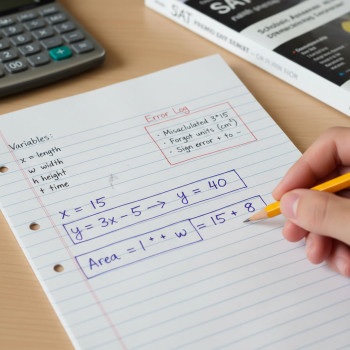
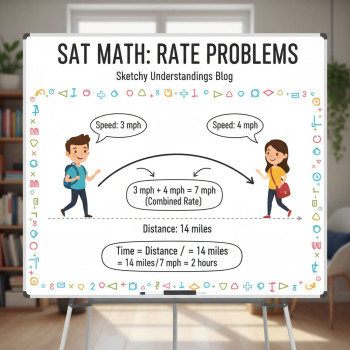
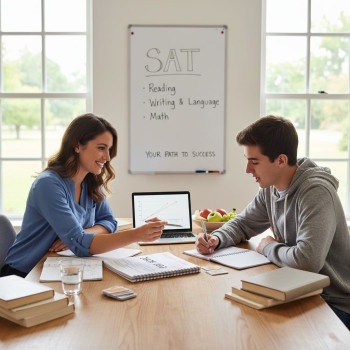

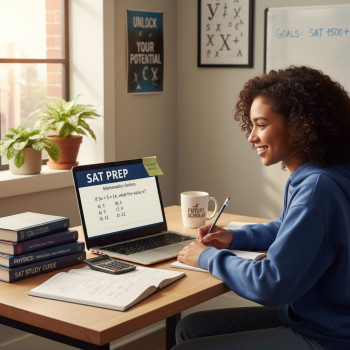




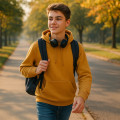
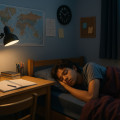




No Comments
Leave a comment Cancel